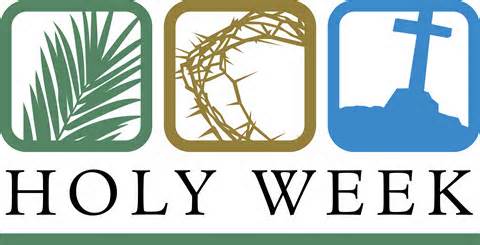Notes on the Notes – Palm Sunday – March 25, 2018

Theme: From “Hosanna” to death
Readings:
Psalm 24 John 12:12-27 John 19:16b-22
What is Palm Sunday?
Palm Sunday is the final Sunday of Lent, the beginning of Holy Week, and commemorates the triumphant arrival of Christ in Jerusalem, days before he was crucified.
Palm Sunday is known as such because the faithful will often receive palm fronds which they use to participate in the reenactment of Christ’s arrival in Jerusalem. In the Gospels, Jesus entered Jerusalem riding a young donkey, and to the lavish praise of the townspeople who threw clothes, or possibly palms or small branches, in front of him as a sign of homage. This was a customary practice for people of great respect. Palm branches are widely recognized symbol of peace and victory, hence their preferred use on Palm Sunday.
The use of a donkey instead of a horse is highly symbolic, it represents the humble arrival of someone in peace, as opposed to arriving on a steed in war. A week later, Christ would rise from the dead on the first Easter.
During Palm Sunday service, palms are distributed. People may wish to take them home and fashion them into small crosses or other items of personal devotion. After Palm Sunday, some of the palms are kept and burned to create the ashes that will be used in the following year’s Ash Wednesday observance.
Music:
Our music this week takes us from the jubilation of Palm Sunday to reflection as we look ahead to Good Friday.
“Sing Out Hosanna to the Lord”
“Sing out hosanna to the Lord! Sing hosanna!
Sing out hosanna with a joyful voice.
Sing out hosanna to the Lord! Sing hosanna!
He comes in glory, let all people rejoice!
Sing out hosanna, He comes today!
Sing out hosanna, praise the Lord!
Sing out hosanna, He come today!
He comes in glory, the King adored.
Hear the joyful songs we raise.
To the Lord give honor and praise.
He’s the King of peace and love,
Son of God sent from above.
Sing out hosanna, He comes today…”
Our service will open with this joyful anthem sung by the Worship Choir. It is based on the Israeli Folk Tune Zum Gali Gali, with additional music and arrangement by Patrick M. Liebergen (2004).
“All Glory, Laud and Honour” (VU #122)
“All glory, laud and honour to you, Redeemer, King,
To whom the lips of children made sweet hosannas ring.
You are the king of Israel, and David’s royal son,
Now in the Lord’s name coming, our King and blessed one.
The multitude of pilgrims with palms before you went;
Our praise and prayer and anthems before you we present.
To you, before your passion, they sang their hymns of praise;
To you, now high exalted, our melody we raise.
Their praises you accepted; accept the prayers we bring,
Great author of all goodness, O good and gracious king.”
The text for this hymn is derived from a long Latin hymn written by Theodulph, Bishop of Orleans (pre-798 C.E.) The tune, written in 1613, is also named for him.
“He Came Riding on a Donkey”
“He came riding on a donkey into Jerusalem.
Praise to you O God!
Take the branches, wave them gently. Lay them down now.
Praise to you, O God!
He came riding on a donkey. He came riding.
Praise to you, O God!”
This week, the Joyful Noise will be singing the song “He Came Riding” by Mary Lu Walker, with Palm Sunday words by Gloria Saindon and Eleanor Lwiwski.
“I Walked Today Where Jesus Walked”
“I walked today where Jesus walked in days of long ago;
I wandered down each path He knew, with reverent step and slow.
Those little lanes, they have not changed – a sweet peace fills the air.
I walked today where Jesus walked, and felt His presence there.
My pathway led through Bethlehem,
Ah, memories ever sweet;
The little hills of Galilee, that knew those childish feet;
The Mount of Olives: hallowed scenes that Jesus knew before;
I saw the mighty Jordan roll as in the days of yore.
I knelt today where Jesus knelt, where all alone He prayed;
The Garden of Gethsemane – my heart felt unafraid!
I picked my heavy burden up, and with Him by my side,
I climbed the Hill of Calvary, I climbed the Hill of Calvary,
I climbed the Hill of Calvary, where on the cross He died!
I walked today where Jesus walked, and felt Him close to me!”
This classic anthem is by Geoffrey O’Hara (arranged by Kenneth Downing) with words by Daniel S. Twohig. It was first published in 1937.
“Jesus, Keep Me Near the Cross” (VU #142)
“Jesus, keep me near the cross; there a precious fountain,
Free to all, a healing stream, flows from Calvary’s mountain.
In the cross, in the cross, be my glory ever,
Till my raptured soul shall find rest beyond the river.
Near the cross, a trembling soul, love and mercy found me;
There the bright and morning star sheds its beams around me. In the cross…
Near the cross! O Lamb of God, bring its scenes before me;
Help me walk from day to day with its shadow o’er me. In the cross…
Near the cross I’ll watch and wait, hoping, trusting ever,
Till I reach the golden strand just beyond the river. In the cross…”
Fanny J. Crosby (1820-1915) was the author of over 8,500 gospel songs… This hymn first appeared in the collection Bright Jewels (1869), compiled by Bradbury, Doane, W.F. Sherwin and Chester G. Allen, at least two of whom were famous writers of gospel song tunes. Indeed, it was Doane who wrote the music and then gave it to Fanny Crosby to add the text—a practice that was not uncommon in their relationship…
The glory of the Cross, a theme of the refrain, is a common metaphor of Romantic-era hymnody. The Cross, a place where the pain of earth and the joy of heaven come together, is a kind of spiritual altar to which we might draw near for refuge and solace. From it flows a “precious fountain”—an image perhaps borrowed from the 18th-century poet William Cowper and his hymn “There is a fountain filled with blood.” Though an instrument of cruel punishment and torture, the Cross is a source of a “healing stream” (stanza one) and a place where “the bright and morning star sheds its beams” on us (stanza two). Stanza three invites us to meditate upon the Cross—“bring its scenes before me.” The “shadow” of the Cross falls on my daily path. This image is reminiscent of another Romantic-era poet, Elizabeth C. Clephane, who in 1872 wrote “Beneath the Cross of Jesus.” Many writers have commented on Fanny Crosby’s ability to employ the technique of hypotyposis—painting a vivid scene as if it were present—even though she was blinded soon after birth…The theme of “Near the Cross” captures the hope and joy of heaven that is so characteristic of Crosby’s hymns: “Till my raptured soul shall find rest beyond the river.” (Source: Dr. Hawn, professor of sacred music at Perkins School of Theology, SMU)
Hear the hymn at: http://www.youtube.com/watch?v=bPtUwVoJsi8
Hear the Hastings College Choir at: http://www.youtube.com/watch?v=cQuZd14ZIJ4



You must be logged in to post a comment.